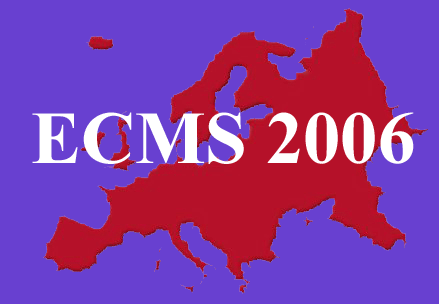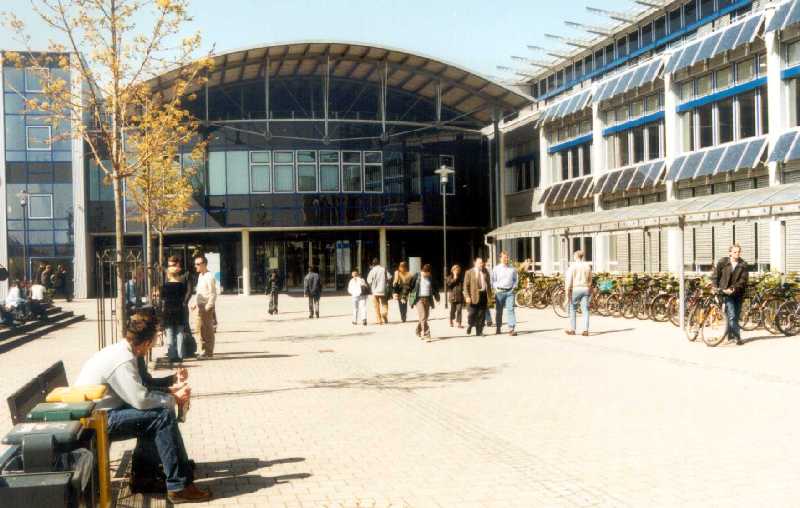
on Modelling and Simulation
ECMS 2006 (formerly referred to as 'SCS-ESM')
May
28th - 31st, 2006
Bonn, Germany
KEYNOTE and PLENARY SPEAKERS, TUTORIALS and WORKSHOPS


Keynote speakers
Prof.
Lotfi A. Zadeh
Computer Science Division
University of California
Berkeley, CA 94720-1776
zadeh@cs.berkeley.edu
BISC Program
http://www-bisc.cs.berkeley.edu/
A New Frontier in ComputationComputation with Information Described in Natural Language
Much of human knowledge is described in natural language.
For this reason, computation with information described in natural
language is certain to grow in visibility and importance as we move
further into the age of machine intelligence and mechanized decision-making.
The problem of computation with information described in natural language
cannot be dealt with through the use of existing natural language
processing techniques. What is needed for this purpose is a new conceptual
structure whose centerpiece is the concept of a generalized constraint.
This structure is described and its applications are illustrated by
examples.
Prof.
François Cellier
President of SCS
(The Society for Modeling and Simulation International)
Institute of Computational Science
ETH-Zentrum, CAB G82.1
CH-8092 Zürich
fcellier@inf.ethz.ch
Wrapping Multi-bond Graphs: A Structured Approach to
Modeling Complex
Multi-body Dynamics
Bond graphs have established themselves as a reliable tool
for modeling physical systems. Yet, they are highly abstract
due to their domain independence. Wrapping techniques allow the modeler to
preserve the best
from two worlds: the flexibility and reliability of bond graphs on the one
hand, and the intuitive appeal and familiarity
offered by a domain-specific modeling methodology on the other.
The talk introduces a new multi-bond graph library for Dymola that
includes a partial re-implementation of
Dymolas standard multi-body systems library using multi-bond graphs.
co-authored by
Dirk Zimmer, ETH-Zürich
Prof. Ulrich Trottenberg
Head of the Fraunhofer Research Institute for
Scientific
Computing and Algorithms
Chair for Numerical Mathematics and Scientific Computing
at the University of Cologne, Germany
Fraunhofer Institute (SCAI)
Schloss
Birlinghoven
53754 Sankt Augustin
Ulrich.Trottenberg@scai.fraunhofer.de
Multigrid in Industry
Multigrid algorithms are the most efficient solutions for a huge class of
large-scale applications
(partial differential equations) in Numerical Simulation.
The talk deals with Multigrid-based software development
and its use for industrial applications.
It turns out that the Algebraic Multigrid approach (AMG) is the right
answer for most of the industrial requirements.
Special Talk for the Bond Graph track
by
Prof. Sergio
Junco
Universidad Nacional de Rosario, Argentina
Bond Graphs: An
Engineering Tool for Integrated Modelling, Analysis, Diagnostic
and Control System Synthesis
Bond graphs convey information on energy processing, power flow
continuity, structure of component interconnection, and
computational causality on physical systems. Thus, they can support
graphical methodologies that exploit these features in
order to analyze dynamic properties and to synthesize and design
controllers for physical systems.
Among other issues, this talk will address the
derivation from bond graphs of the so-called port-controlled Hamiltonian
models
with dissipation, introduced in the domain of nonlinear control theory;
the assessment of properties like stability of equilibria,
input-output passivity, and differential flatness; the obtention and
application of input-output inverse models; as well as the
synthesis of control laws (regulation, stabilizing, tracking controllers)
for (possibly) nonlinear systems.
Extended abstract
Tutorials
Prof.
Wolfgang Borutzky
Department of Computer Science
University of Applied Sciences
53757 Sankt Augustin, Germany
wolfgang.borutzky@fh-bonn-rhein-sieg.de
AND
ir. Johan Hemssems
Controllab Products B.V.
Enschede, The Netherlands
johan.hemssems@controllab.nl
Bond Graph Modelling and
Simulation of Mechatronic Systems
This tutorial introduces into a graphical, computer aided modelling
methodology that is particularly suited for the concurrent design
of controlled mechatronic systems, i. e., for engineering systems
with mechanical, electrical, hydraulic or pneumatic components
including interactions of physical effects from various energy domains.
The methodology clearly and intuitively starts from the observation of
energy flows between the components of a system.
Physical effects and their interactions are considered and are taken into
account in a qualitative manner. In general,
the methodology enables to develop a graphical model that is consistent
with the first principle of energy conservation without having the need
to establish and to reformulate any equations. The derivation of a
mathematical model from the graphical description that is suitable for the
purpose of a study
can be rather left to appropriate software tools performing this task
automatically.
As a consequence, users of the methodology can focus on physical modelling
of a system.
The application of the bond graph modelling methodology is illustrated by
a number of small example systems from various disciplines.
As an example of a software supporting bond graph modelling, the 20simTM
multi-formalism modelling and simulation environment is used.
Beyond the introduction, the tutorial addresses some advanced topics in
order to demonstrate the potential of this
powerful modelling approach to mechatronic systems. To this end, it is
shown how models of multibody systems including flexible bodies
can be build in a systematic manner. Moreover, a brief outlook of further
advanced state-of-the-art applications of bond graphs is given.
The tutorial welcomes all interested individuals, professionals, students
and faculty members who may want to
come to know a methodology that meets today's requirements of
multidisciplinary modelling
and that complements traditional methodologies based on block diagrams or
networks.
Emiliano Casalicchio
Universita' di Roma Tor Vergata
and
Federico Morabito
Telecom Italia Learning Services
Through the Evolution of Publish/Subscribe Systems
The publish/subscribe communication paradigm is suitable for
the efficient exchange of information in a variety of large-scale dynamic
applications: news delivery, stock quoting, air and metropolitan traffic
control, on-line games, dissemination of multimedia contents,
dissemination of auction bids, services and resources discovery, remote
control of critical infrastructures and management of large scale systems.
In the last decade publish/subscribe systems have evolved both in terms of scalability and in terms of flexibility of representation and ease of customization. Primitive implementations are centralized whereas the newest solutions are distributed and highly scalable. As far as the flexibility of representation and ease of customization, the newest content-based solutions introduce more flexibility in the subscriber preferences specification process, compared to the older channel- based solution.
The tutorial will start with a complete overview of
publish subscribe systems and their evolution, from their origin until
present.
Real scenarios will be used to show the applicability of such a
communication paradigm, from informative services to distributed
application and control systems.
The second part of the tutorial will focus on the main research topics about publish/suscribe systems: design of novel solutions, modelling and simulation.
Audience background:
The audience should be familiar with the internet architecture and
infrastructure (basic background), and with the principles of discrete
event modelling and simulation.
Page created by M.-M. Seidel Last update 21-05-06.
© Copyright ECMS - All Rights Reserved

